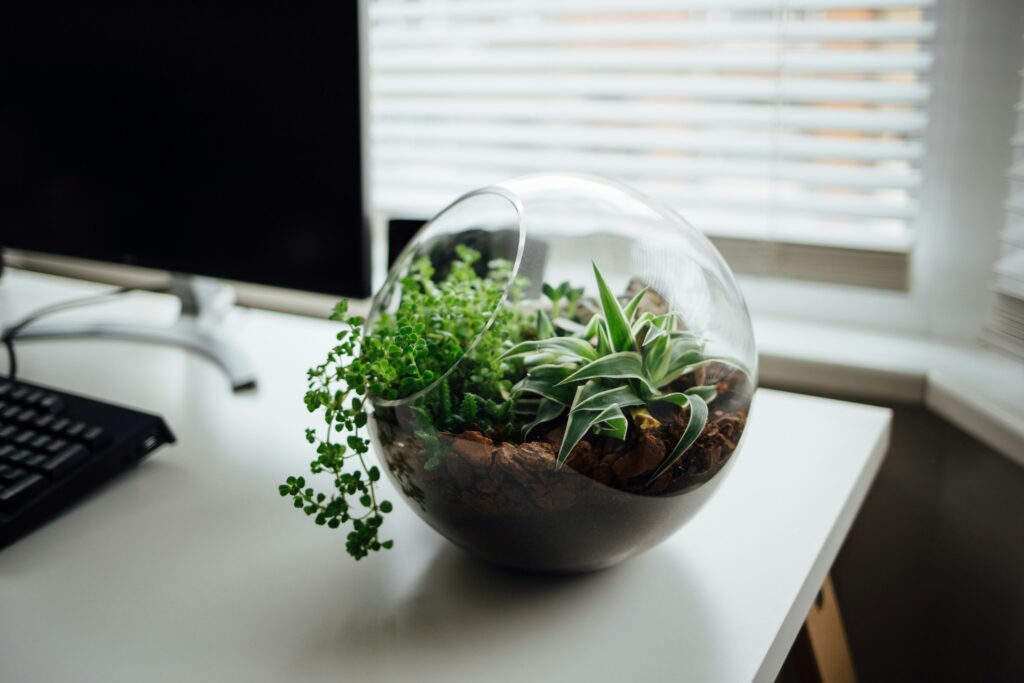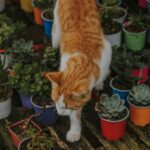Welcome to the World of Terrarium
What is a Terrarium? Imagine capturing an entire thriving ecosystem in a glass jar; It’s not just décor; it’s a living, breathing biosphere that thrives with minimal intervention. Terrariums are an ideal entry point for organic gardening in tight urban spaces, offering all the benefits of traditional growing with a fraction of the mess.
They create a self-sustaining loop of life where plants, soil, and moisture co-exist in a beautifully balanced cycle. Once established, these tiny ecosystems require little maintenance, making them perfect for eco-conscious gardeners seeking a low-effort, high-impact green thumb project.
Terrarium vs Traditional Pots
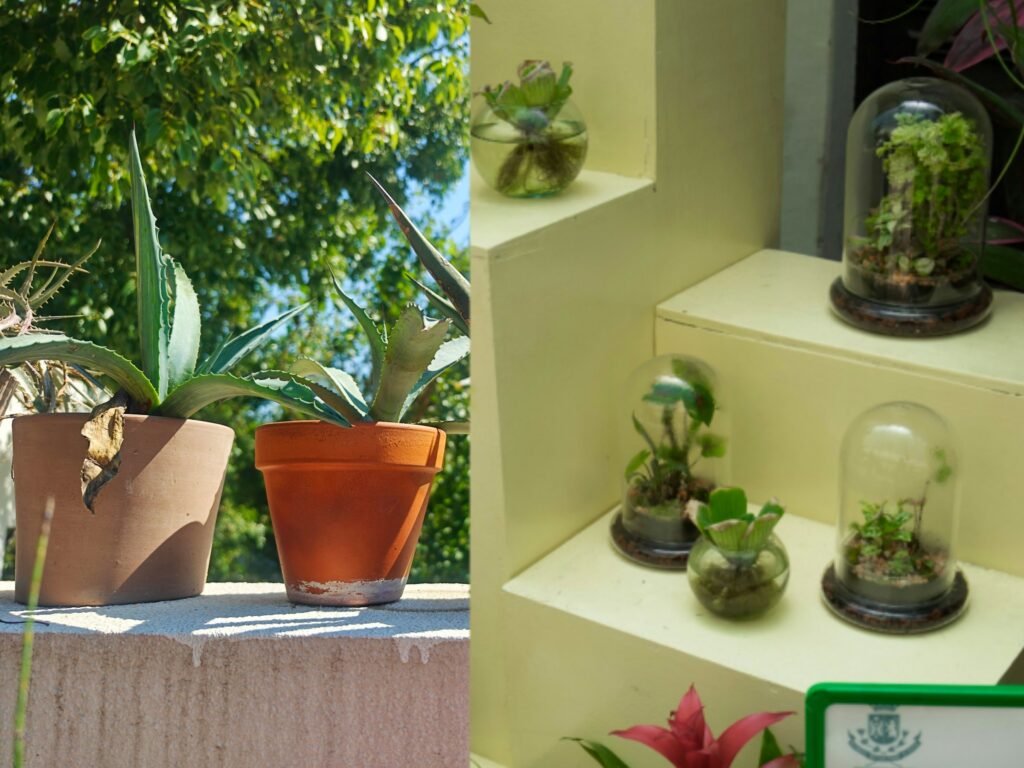
Pots are good for plants, but terrariums are even better. Pots let plants get air, but dry out quickly and need a lot of care. Conversely, terrariums create a small, controlled environment that keeps humidity and warmth, similar to a forest floor.
They allow for more controlled organic growth, reduce watering frequency, and often house beneficial microfauna, nature’s cleanup crew. The enclosed environment also helps protect delicate plant varieties from external pollutants and pests, making it a stealthy win for indoor growers.
Choosing the Right Container
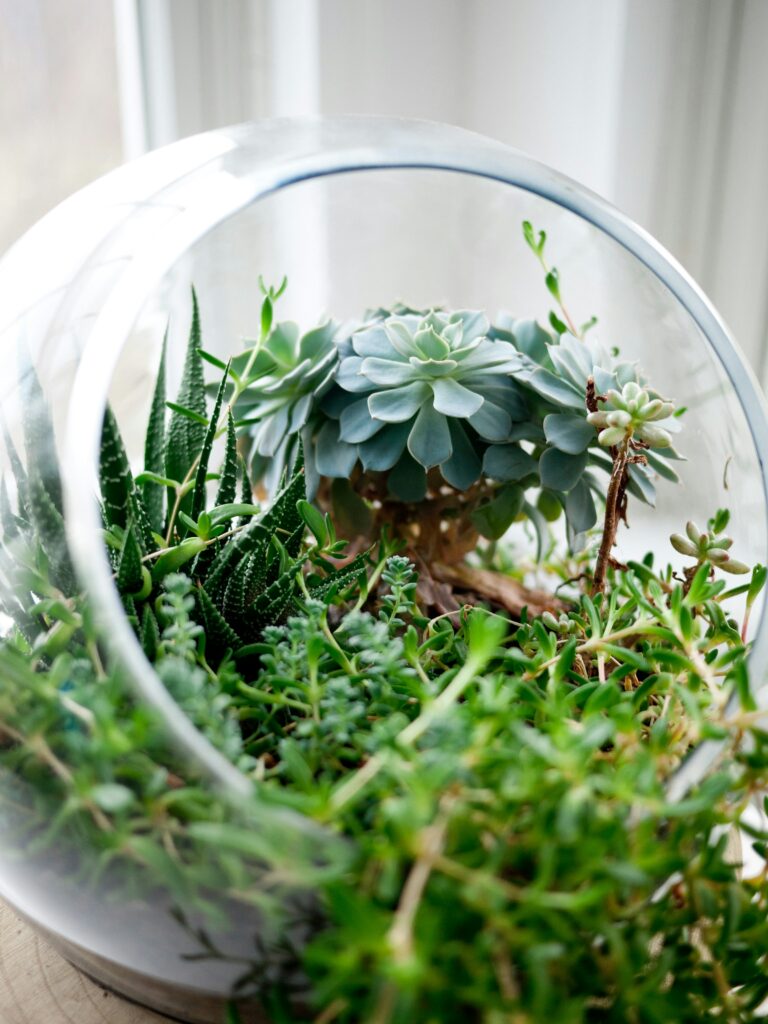
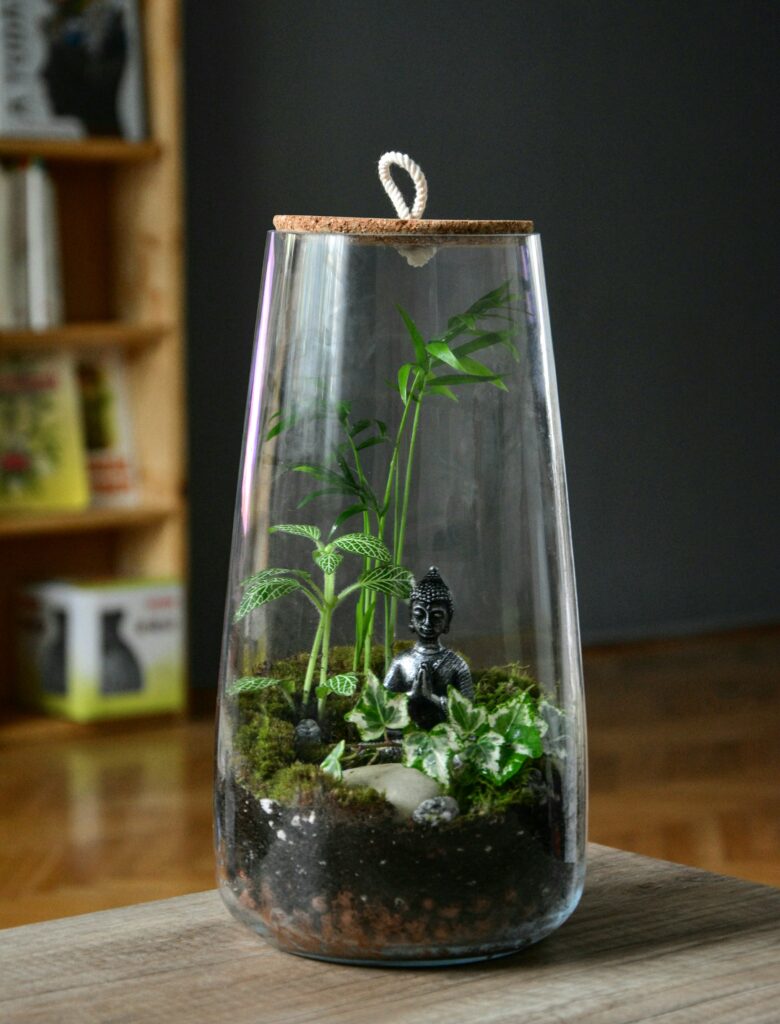
Your container sets the tone. Open terrariums are great for plants that love airflow, think succulents and cacti. Closed terrariums are moisture traps, perfect for humidity-loving plants like ferns and mosses.
Don’t be afraid to get creative: upcycle an old apothecary jar, use a cracked fishbowl, or even repurpose vintage glassware, as long as it’s clear and can hold layers of life, it’s fair game.
Layer Like a Pro: Building the Base
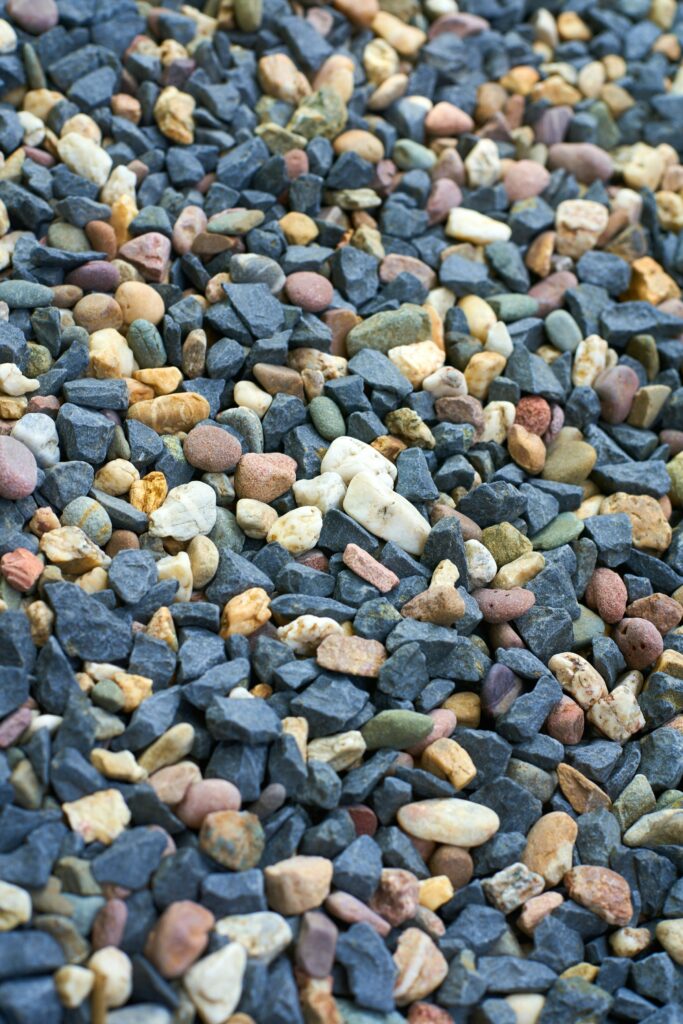
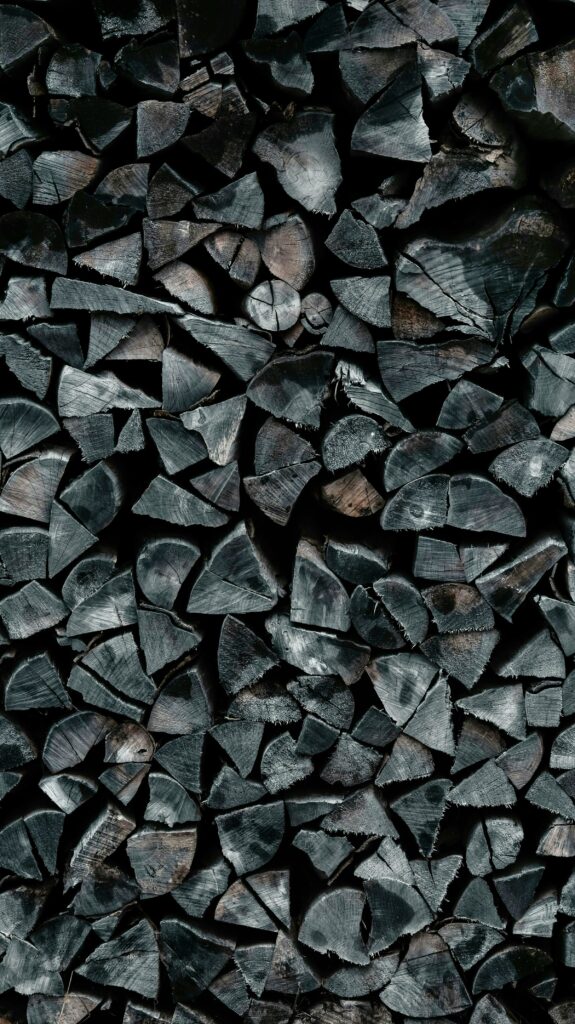
A thriving terrarium starts from the ground up, literally. The base layers act like a filtration system, managing water flow and aeration.
Start with small pebbles or stones to create a drainage reservoir. Follow that with a layer of activated charcoal to prevent fungal growth and purify water as it cycles. These aren’t just pretty layers, they’re functional components of a living system.
Soil Science in a Terrarium
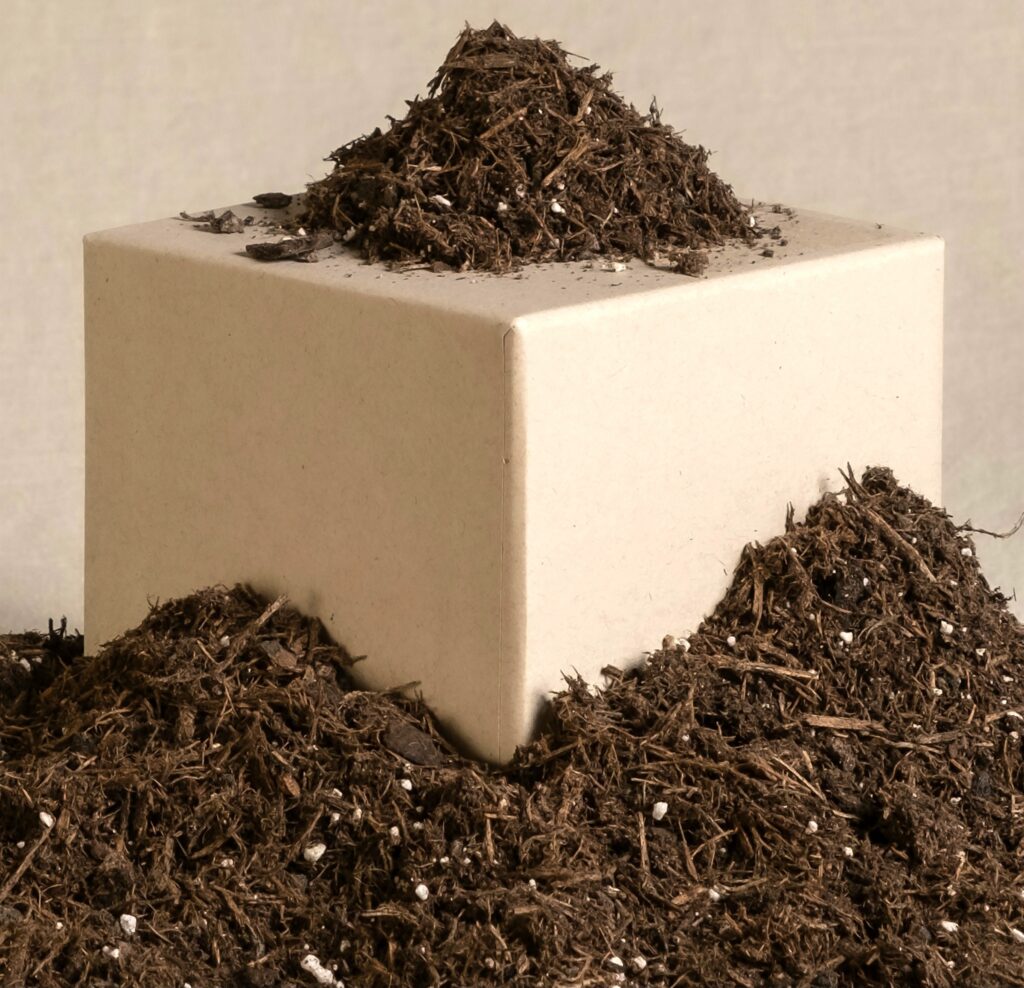
Terrarium soil isn’t one-size-fits-all. The key is crafting an organic mix that mimics natural woodland soil, rich, breathable, and chemical-free. Start with a base of organic potting soil, then tweak with compost, perlite, or coconut coir for better structure and aeration.
Skip the synthetic fertilisers; instead, let composted material and beneficial microbes enrich the soil naturally, turning your terrarium into a mini regenerative ecosystem.
Selecting the Right Plants
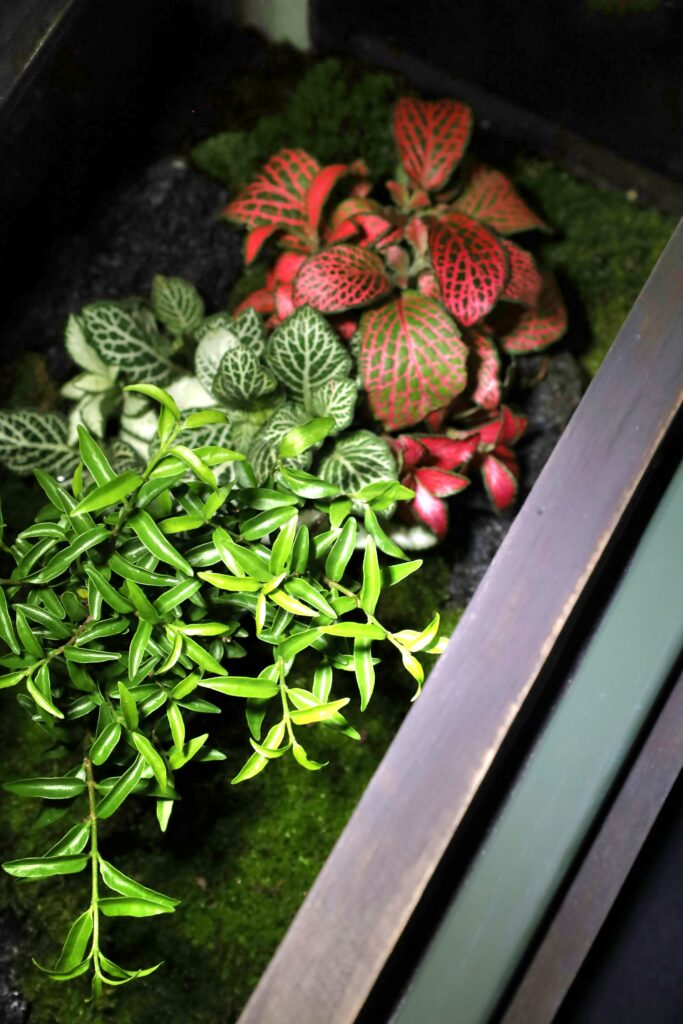
This is where the magic begins. Choose plants that look good together and thrive under the same conditions. To make a closed terrarium, select moisture-loving plants like maidenhair ferns, mosses, and baby tears to ensure a lush and vibrant environment. For open ones, go with succulents, air plants, or peperomia.
Avoid mixing high-moisture plants with arid-loving species. They’ll fight for conditions, and one group will suffer. Think harmony group by water, light, and growth style for a lush, balanced vibe.
Creating a Mini Ecosystem That Thrives
Don’t stop at plants, introduce life beneath the surface. Microfauna like springtails and isopods are your natural janitors. They break down decaying matter, control mold, and keep the terrarium smelling fresh.
Balance is everything. Too much moisture invites rot, too little dries things out. Monitor condensation, airflow, and lighting to maintain equilibrium. When it works, you’ll see nature take over in the best way.
Decor With a Purpose: Add Life and Style
Your terrarium should be beautiful and functional. Use bark chips, stones, and driftwood to create visual interest while offering microclimates for insects and beneficial fungi.
Try adding a miniature moss wall or tiny water feature using a hidden pipette, it’s part art, part biology. These additions create hiding spots, moisture pockets, and aesthetic flair all at once.
Terrarium Care Without Chemicals
Going organic means ditching the sprays. For pests, introduce beneficial insects like ladybugs (yes, even in terrariums) or use neem-based solutions if needed. Keep airflow smooth by occasionally cracking open the lid and trimming overgrowth.
Water smart, not hard. Use distilled or rainwater to avoid mineral buildup. And always mist, don’t pour. Terrariums thrive on light hydration and gentle lighting, think filtered sunlight or soft grow lights for that perfect glow.
DIY Step-by-Step: Build Your Terrarium Ecosystem
What You’ll Need to Get Started
- A clear glass container (jar, fishbowl, vase, or upcycled glassware)
- Pebbles or small stones for drainage
- Activated charcoal
- Organic potting soil mix
- A mix of terrarium-friendly plants
- Decorative elements (bark, rocks, moss, figurines)
- Microfauna (optional)
- Tools: spoon, tweezers, spray bottle, gloves
Step 1: Clean and Prep Your Container
Rinse off all grime and residues. A clean start prevents mold and promotes healthy growth. Use vinegar for natural sterilisation, if you’re repurposing old glass.
Step 2: Add the Drainage Layer
Lay down a 1-2 inch layer of pebbles. This zone traps excess water and keeps roots from sitting in moisture, a critical step to avoid root rot.
Step 3: Sprinkle in Activated Charcoal
This layer acts like your terrarium’s detox system. Add half an inch to absorb odors and impurities. It’s especially crucial for closed environments with limited ventilation.
Step 4: Add Your Organic Soil Mix
Layer in 2-4 inches of your custom soil blend. Create a gentle slope or mound in the center to mimic natural terrain and help with water flow.
Step 5: Plant Like a Pro
Use tweezers for precision and plan your plant placement. Anchor larger plants first, then tuck moss and small growers into corners. Press gently to secure roots and eliminate air gaps.
Step 6: Decorate and Add Microfauna (Optional)
Place your decor with intention, think of it as landscaping in miniature. Add springtails or isopods to handle decomposition and maintain the ecosystem balance.
Step 7: Water Lightly and Seal (If Closed)
Mist until the soil feels damp but not soaked. For closed terrariums, seal with a lid to create humidity. For open ones, leave uncovered and adjust watering based on plant needs.
Step 8: Place in the Right Spot
Find a bright space with indirect sunlight. Avoid south-facing windows unless you have sheer curtains. Rotate weekly for even exposure and growth.
Step 9: Monitor and Maintain
Keep an eye on condensation levels. Open the lid if it’s foggy for more than a few hours. Trim overgrowth, remove dead material, and add water only when needed. Reintroduce microfauna if populations dwindle.
Sustainability Goals in a Terrarium Jar
Terrariums represent the future of small-space, zero-waste gardening. They recycle moisture, reuse nutrients, and foster biodiversity in a container the size of a lampshade.
More than just a hobby, they’re a lifestyle cue, urging us to downsize consumption, upcycle waste, and reconnect with natural cycles, even in urban jungles.
Troubleshooting Your Terrarium Jungle
Yellowing leaves? Check for overwatering or insufficient light.
Foggy glass? It might need ventilation.
Mold? Introduce more microfauna or remove infected material.
Most issues stem from imbalance, too much water, not enough airflow, and incompatible plants. Fixing them is often just a matter of adjusting your inputs and letting the system reset itself.
Building a terrarium ecosystem isn’t just planting in a jar; it’s cultivating a self-sufficient microcosm. It’s organic gardening distilled to its purest, most poetic form. Let nature do what it does best in miniature.
